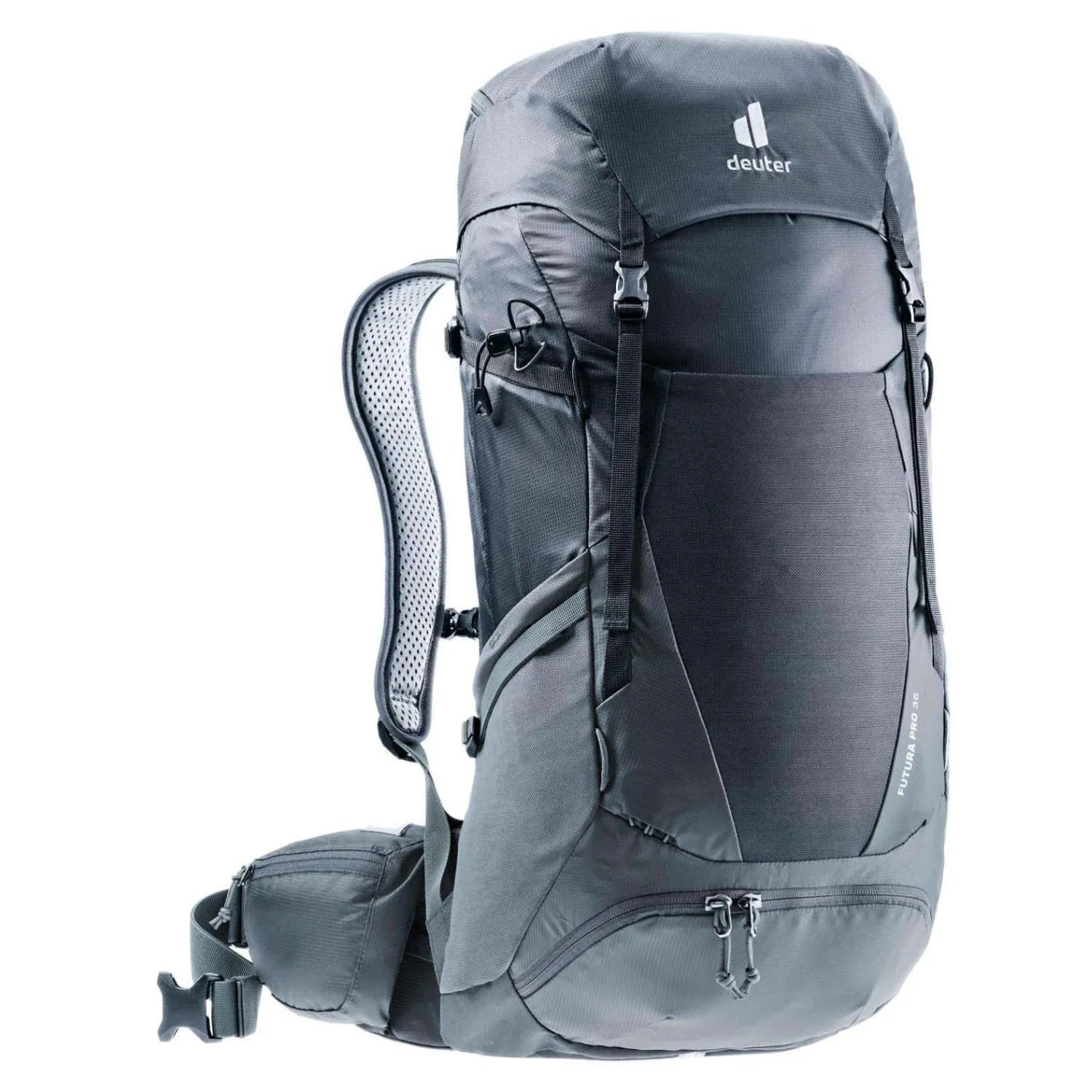Hiking backpacks
Buy a hiking rucksack
Are you looking for a new hiking backpack? We'll show you how to find the perfect hiking backpack for you, what to look out for when packing a hiking backpack and how to look after your hiking backpack.
The right hiking backpack - features & equipment
Which functions & features are useful? What features should my hiking backpack have? - This certainly depends mainly on what kind of tours you are planning and what you want to take with you. In general, however, almost all hiking rucksacks have the following features:
- Inner pockets, outer pockets and lid pocket
- A height-adjustable chest strap (this stabilises the shoulder straps)
- Padded shoulder straps
- An adjustable hip belt - this is where most of the weight lies and the shoulders are relieved.
- A mesh back ensures ventilation of the back by creating space between the back and the rucksack. The back panel is curved and the mesh fabric is stretched tightly over this curve. This allows air to circulate.
- Many hiking rucksacks have loops for attaching hiking poles.
- Some rucksacks have an integrated rain cover. However, you can also purchase rain covers separately - take a look at our backpack accessories category.
How big should a hiking rucksack be?
If you mainly need your hiking rucksack for day trips, then a volume of between 20 and 30 litres should be sufficient. It is important that there is enough space for a warm jacket and rainwear - and of course for food and drink.
If you are travelling for several days, then take a look at our trekking backpacks section. Trekking rucksacks are designed for multi-day tours - and are generally larger than hiking rucksacks.
Packing your hiking rucksack correctly
How do I pack my hiking rucksack correctly to carry my luggage as comfortably as possible?
Distribute the weight correctly
For optimum weight distribution, the centre of gravity should be as close to the body as possible at shoulder height. This means that light luggage should be stowed on the ground. This is followed by medium-weight luggage in the centre of the backpack - and then you can pack heavier items at the top.
Smaller items such as your mobile phone or sunglasses - which you should have to hand - are best stowed in the small compartment at the top of the rucksack.
Adjusting your hiking rucksack
Adjust your hiking rucksack correctly - for an optimum fit. Here's how:
- First loosen all the straps.
- Now centre the hip belt around your pelvic bones and pull it tight.
- Now tighten the shoulder straps. However, please only tighten them so that they rest lightly on your shoulders and pinch.
- Now you can loosely fasten the chest strap.
- To keep the weight closer to your body, pull a little on the load control straps (small straps at the top of the shoulder straps). The rucksack should never pull backwards.
Hiking rucksacks for women
There are special hiking rucksacks for women. Why? The hiking rucksack should fit your anatomy. As women often have a shorter back than men, the back length of hiking rucksacks for women is usually a little shorter. The hip belt and shoulder straps are also adapted to the female anatomy. For example, the shoulder straps are often a little closer together.
Hiking rucksacks for children
Children can also carry their own hiking rucksack. It is important that they do not weigh more than 10 per cent of their own body weight. With hiking rucksacks for children, it is important that the back length of the carrying system can be adjusted. Otherwise they will quickly outgrow their hiking rucksack.
Proper care of the hiking rucksack
To ensure that your hiking rucksack lasts as long as possible, please do not wash it in the washing machine, as this can damage the PU layer. This is the layer that makes the rucksack water-repellent.
If it has stains or is dirty - simply brush it out or wipe it with a damp microfibre cloth. After a hike, empty out the rucksack completely and store it in a dry place.

















































